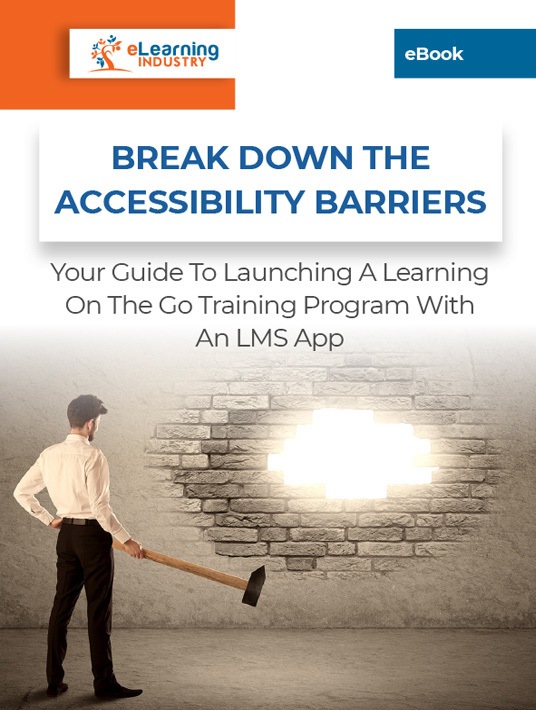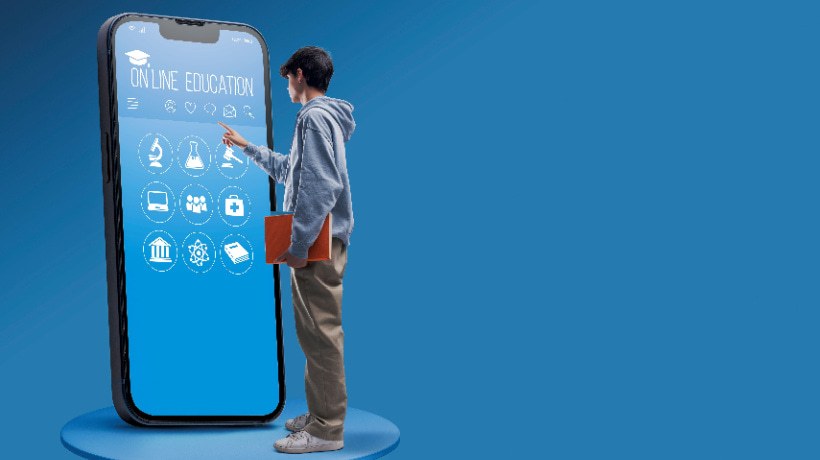Enhance Learner Retention With Microlearning And Mobile Learning Apps
You might recall this phenomenon from your childhood, or maybe even your college days. You spend a week cramming for exams, and you might even pass. But the second you leave the exam room all that knowledge evaporates. You could literally be asked a subject-based question at the door and you’d genuinely have no clue what the answer is. This happens to adults, too, when they finish corporate seminars. If the topic is something they need for their day-to-day office tasks, how can you help them establish and maintain recall? Here are 6 secrets to use microlearning and mobile learning apps to improve knowledge retention on-the-go.

1. Memorable Microlearning Video Demos
Not all of us are visual learners, but we’re likely to remember video content more than text. Visually-oriented learners would only need to watch the video once. That’s enough to commit it to memory. The rest of us mortals need repeated access to said video. Each time we watch it, it sinks a little deeper into our psyches. And if we need a momentary refresher, we can pull up the video and review it. Mobile learning apps can support micro-video, as long as the file size is small. So, it could be a sped-up recipe video, with ambient music. Or a micro-second GIF with captions and no audio. Just seeing that flashing image could be enough to shake up your memory bank and release the knowledge you need. And there are lots of free GIF-makers.
2. Pop Quizzes To Reinforce Comprehension
Remember the example of answering a verbal question as you exit the exam room? This tactic can be a helpful tool for mobile training. Your mobile learning app can have a designated section with quick quizzes for self-assessment. It could be a mix of quick-fire buzzer questions, seeing how many you can answer—correctly—in a minute. This is a good way to revise a certain topic. This could be a self-initiated activity, but it could also be spread across the eLearning course. An effective technique is to have one at the start of a chapter, to assess prior knowledge and prime your learning. Then have a closing quiz after the module to confirm comprehension.
3. Merged Presentations Of Text And Visuals
A combination of pithy words and dense icons are a more effective memory tool than either medium on its own. Mobile learners might remember a certain word in the eLearning infographic. Or they might spot specific symbols and icons. These micro-elements can jog their minds to recall the rest of the information on the document. eLearning infographics are good summary options. You can condense pages of text into a single visual. And because one logo can represent a whole point, it becomes a helpful way to test and reinforce recall. Save and upload them in a format that is easily consumed via mobile. Ideally in hi-res portrait mode, so you can zoom into the details. Compress it to less than 100kb for fast loading.
4. Step-By-Step Audio Clips As A Guidance Tool In Your Mobile Learning App
Many videos are viewed on mute. We hear this stat thrown around a lot—and we’ve probably proven it ourselves. It might be an office thing, where you don’t want to distract the co-workers or lure the boss to your desk. Or it might be a ''public viewing'' where background noise drowns out the sound. Sometimes, you’re not in a position to actively look at the screen. You might be driving or doing something else. In such cases, an audio refresher can be a lifesaver. You can listen while you work, allowing the knowledge to passively seep in. You could also use clips to ''talk you through'' a task. If your earbuds are discreet, no one will even notice.
5. Mobile-Friendly Simulations
Simulations give corporate learners the ability to apply their newfound knowledge. Which means they’re more likely to retain the information. For example, they might not remember how to perform a task after reading a walkthrough. But they’ll probably memorize the steps and even hone the necessary skills through a mobile learning app simulation. The key is to only include the basics so that it’s bite-size and personalized for their needs. They don’t have the time to complete a 10-minute task simulation that maps out every aspect of the process. However, you can break it into distinct process/sub-tasks they can explore on their own, then move on to the next.
6. Compliance Games To Mitigate Risks And Boost Retention
Another way to leverage bite-size support in your mobile learning app is to incorporate compliance games. These quick but entertaining gaming experiences give employees the power to reduce mistakes that lead to fees or penalties. They can use pop quizzes to identify compliance gaps, then use the games to bridge them discreetly, before they risk the lives of their co-workers or incur a costly fine for your company. In addition, games improve employee engagement and emphasize the real-world benefits of what they’ve learned, which are the key ingredients for knowledge retention.
Microlearning modules are small but mighty. Possibly too small to teach you a comprehensive lesson. But they can serve as a quick memory capsule in JIT scenarios. Think of it as a memory primer. Say, for instance, you’ve learned how to load a copier, but when you stand in front of the boss, your mind goes blank. Seeing a Gif of the copy buttons—or a gag of someone photocopying their face—might make you smile. And that light moment could unlock your mental cache. Apart from millisecond videos, you can also get memory aids from audio clips, infographics, or pop quizzes. The only caveat is to ensure they’re compatible with your mobile phone.
Are you looking for an on-the-go LMS that provides anytime-anywhere support to your entire team? Download the eBook Break Down The Accessibility Barriers: Your Guide To Launching A Learning On-The-Go Training Program With An LMS App to discover secrets to use microlearning and mobile learning apps to improve knowledge retention on-the-go.









